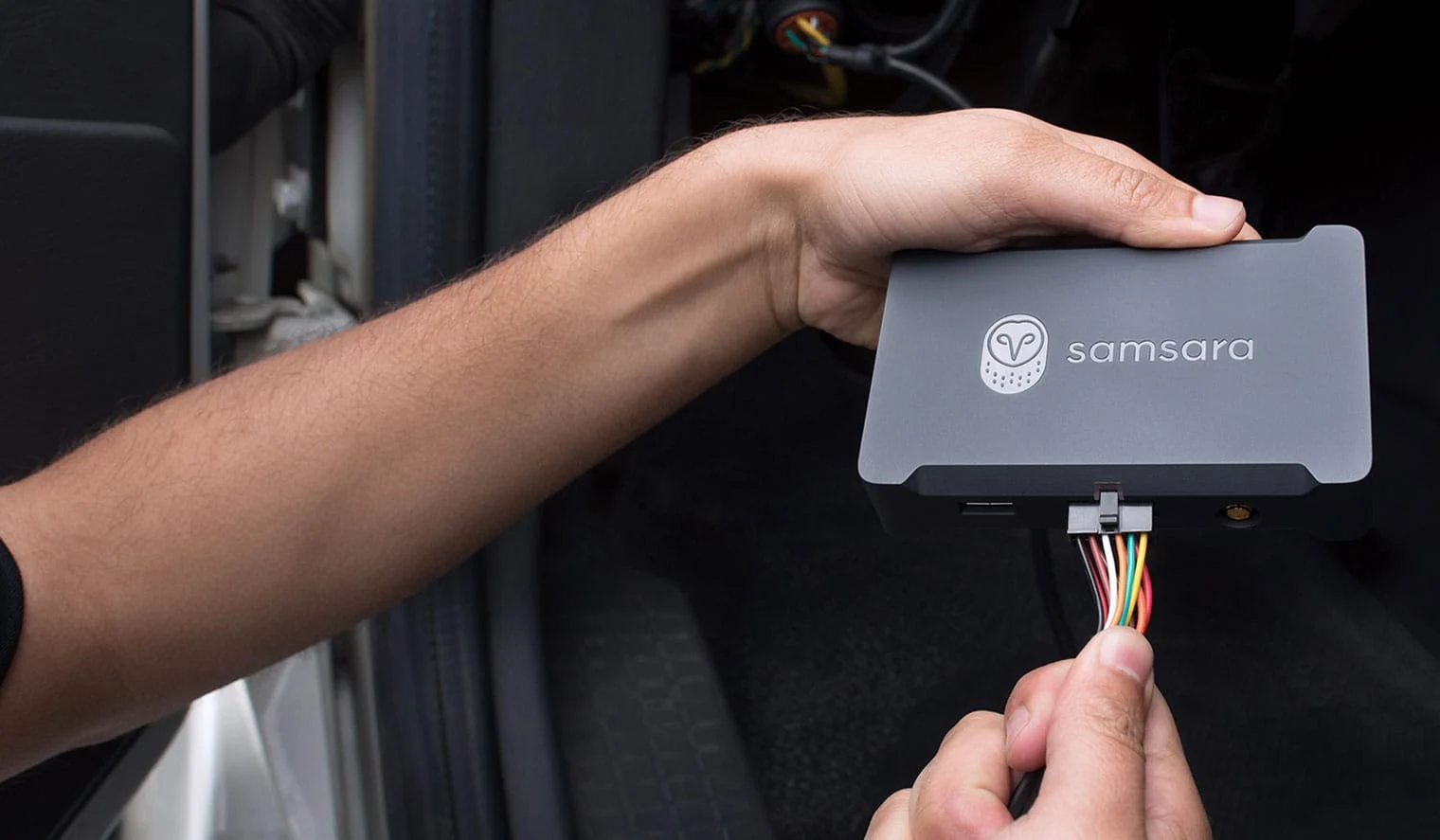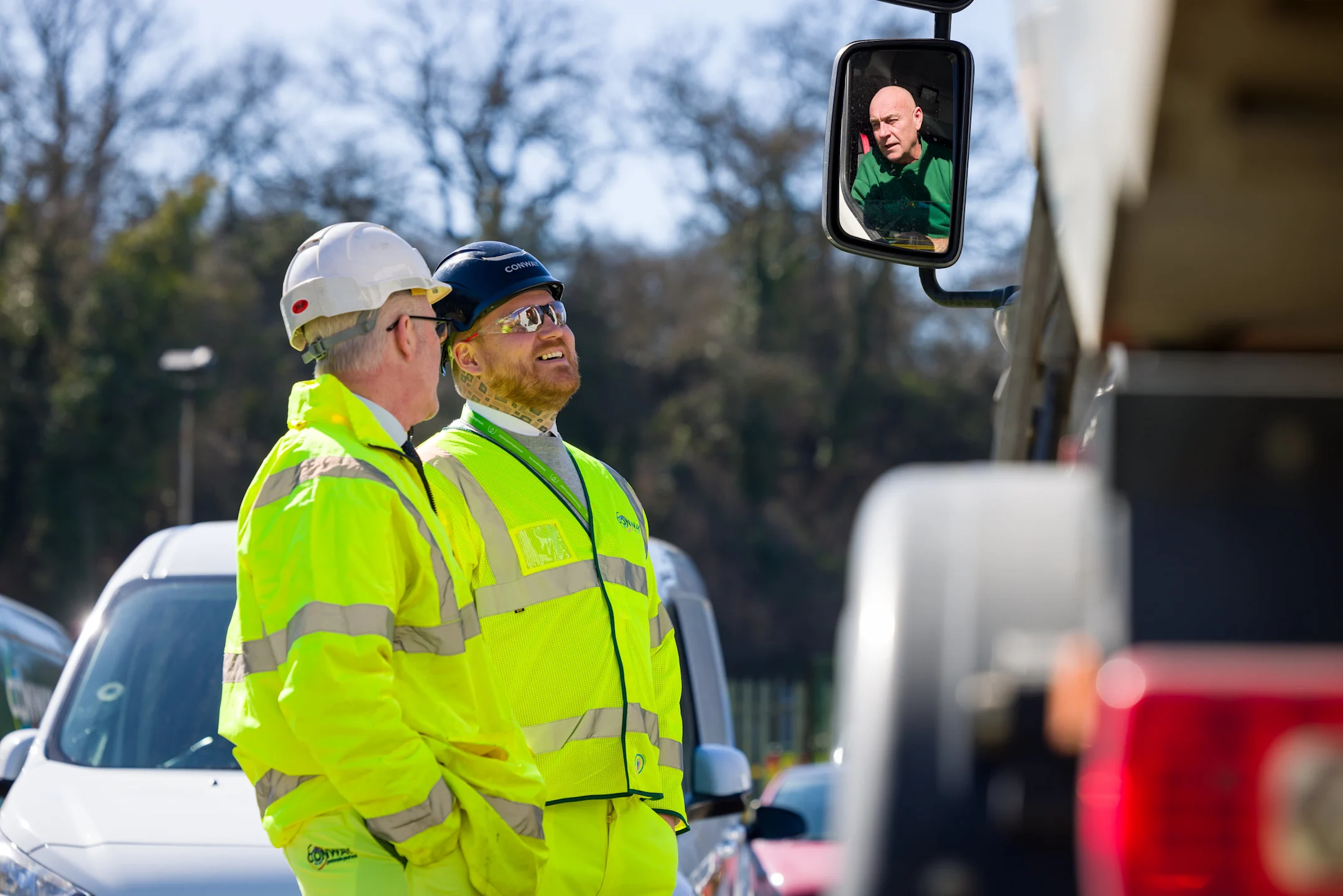Perspectives
The Next Fleet Generation : Technology holds key to solving ongoing driver recruitment crisis
November 3, 2025
UK&I Director of Enterprise and Mid Market Sales

Get the latest from Samsara
Subscribe nowThis blog is part of The Next Fleet Generation, a five-part series based on Samsara’s latest research into the UK’s driver recruitment challenge. Together, the blogs explore how technology, people and perception are reshaping driving and physical operations, examining everything from Gen Z’s attitudes and life on the road to the ways employers are building the next generation of fleets.
Six in ten Gen Z (62%) have a positive view of driver-based careers, with more than half (58%) describing them as an attractive career option. That’s according to a survey* of young people aged 16-25 and commissioned by Samsara, which sought to understand their views about a career in driving and the broader world of logistics and physical operations.
Coupled with the fact that most current commercial drivers (88%)** would recommend the job to younger people, it would be fair to assume that when it comes to recruitment and retention, the sector is firing on all cylinders. But nothing could be further from the truth.
A report by the Road Haulage Association (RHA) in February 2025—Lorry drivers: the vital link. Attracting, training and retaining key workers in the UK supply chain—warned that the UK needed to attract 40,000 new HGV drivers a year over the next five years to offset the number of people leaving the profession. In its 2025 report, the IRU—the world road transport organisation—highlighted what it described as increasingly alarming “underlying structural demographic trends”, most notably a “widening age chasm” between younger and older drivers.
Indeed, Samsara’s polling of 500 commercial drivers in the UK found that half (49%) plan to retire or leave within five years, including 19% within three years and one in 10 (9%) by the end of 2026. At the same time, the average age of drivers is ever-increasing.
As Peter Cox, Head of Transport at rental laundry company CLEAN Linen & Workwear, which employs hundreds of drivers, put it: “The shortage is still there and it’s still challenging. If we can’t drive that average age down from 51 years of age, it’s absolutely going to get worse.”
Without a stronger pipeline of new recruits, the sector faces a bleak future.
The driver recruitment conundrum
This conundrum raises a fundamental question. If there is an appetite among young people to enter the profession, what is preventing them from signing up for careers in the industry? And what structural factors, if any, are preventing a willing generation from stepping into these roles?
According to Peter Cox, it’s pretty clear-cut. “Driving is often seen as old-fashioned or low-skilled,” he said, “when in reality, it’s the complete opposite.”
Indeed, driving for a living—whether it’s vans, trucks, buses, coaches or Class 1 lorries—is one of the most highly skilled and heavily regulated jobs around. Regardless of whether they’re involved in multi-drop parcel runs, daily just-in-time deliveries that keep businesses running, passenger transit, or field services where driving is only part of a broader operational role, drivers need a range of skills, including the ability to think on their feet, solve problems, liaise with customers, and keep to tight deadlines.
What’s clear is that no two roles are the same and many people outside the sector simply don’t comprehend what’s involved. For Lee Cook, Compliance Manager at infrastructure services provider FM Conway, it’s not simply a question of perception.
“It’s not just an image problem, it’s education,” said Lee. Kids love the tech—you’re driving machinery worth the same as a Rolls-Royce or a Lamborghini—but all they hear are stories about long hours, stress, and loneliness and then they switch off.”
For Andrew Sharp, Transport Manager at Delifresh, part of the blame lies with social media and the countless videos of crashes that litter people’s feeds. “You never see the positives,” he said.
Addressing the driver shortage one fleet at a time
Despite these headwinds, the sector is pushing forward. And the engine behind that recruitment and retention is those businesses going above and beyond to maintain a steady supply of talent.
To better understand the implications of our research, we spoke to six Samsara customers to understand more about the driver shortage and how they approach attracting and retaining workers. Without exception, all are taking positive concrete steps to improve recruitment and training. This includes:
Reaching out to schools, colleges and local communities, offering apprenticeships, work experience and entry-level pathways that open the door to younger recruits.
Supporting new drivers with structured onboarding and tailored training programmes that build confidence and competence, while clear career progression helps show there’s a future beyond the first role.
Introducing recognition schemes, bonuses and wellbeing support, backed by efforts to create inclusive cultures where drivers feel respected and part of the team.
The common thread is that they hire for potential, do their best to remove early barriers, and give new starters structure and support to succeed. They also use technology to make the job safer and to build a working culture that not only attracts people to their industries and businesses, but also makes them want to stay.
The message from these forward-thinking employers couldn’t be simpler: the world of driving, logistics, transport, construction, and physical operations has roles for everyone, from school leavers to those looking for a career change.
Setting out a clear career path
For instance, Lee Cook started as an apprentice, became an HGV driver at 18 before being promoted to compliance manager by the time he was 30. Andrew Sharp left a director role in adult social care to pursue a childhood dream to drive a lorry. While Systems Team Leader, Amber Kirkby, made an even bigger switch, moving from wedding planning to running Samsara’s Connected Operations systems for around 4,000 vehicles at Lanes Group.
Amber may not be a professional driver, but she’s the next best thing—heading an all-woman team responsible for a huge, nationwide fleet. Indeed, she typifies the new wave of jobs created as physical operations adapt to long-overdue digital transformation. It doesn’t just impact drivers but the way fleets operate, making them safer, more efficient, and more sustainable.
How technology is changing the job—and its image
This digital transformation of the sector is transforming the role of drivers and the way fleets operate. Connected operations is about linking up the physical world through Internet of Things (IoT) and cloud technology so businesses can see and act on real-time data.
Vehicles, machines, cameras, sensors and mobile apps all feed into one system, giving managers a clear view of what is happening across their operations. This allows fleets to spot risks earlier, cut downtime, optimise routes and fuel use, and automate routine admin.
On the ground, technology protects drivers and improves training. Cameras have overturned false complaints, exonerated drivers, and helped build trust. New recruits gain confidence quickly through connected training and simple video clips with in-cab alerts acting as a co-pilot to build awareness without pressure.
Operations are also becoming leaner with proof of delivery and live order visibility cutting wasted miles, while safety and eco scores reward good driving. The result is safer, more sustainable and more efficient fleets.
In fact, today’s drivers are positive about the role that technology plays in their work. More than half (55%) say in-vehicle technology has improved, while nearly half (49%) say their job tech—from mobile devices to digital workflows—is better.
Technology is not just changing the industry, it’s changing people’s perception too
As more and more people experience this for themselves, it’s changing the way that physical operations is perceived. And it has the potential to strike a chord with the next generation of drivers.
According to our survey, young people want to work with technology, with 57% saying they are interested in jobs that use the latest AI.
The current crop of drivers also believe technology can help attract younger people into the profession. In fact, 42% say showcasing modern technology and smart vehicles would help bring new entrants into the industry, alongside better awareness in schools and clearer progression routes.
“Vehicles these days are lit up like Christmas trees,” said Peter Cox from CLEAN. “If we stood outside a tech college and said, ‘Come and sit in this truck, and in a couple of years you could be on £40k and you won’t need to go to uni,’ some would bite at the chance,” he said.
The future of tech
And it doesn’t stop there. In our driver poll, more than half (55%) said AI will make their job easier, while a clear majority (65%) also think it will create new jobs in the industry, from fleet tech support to monitoring and coaching.
In other words, driving and physical operations are changing fast. Vehicles now come with smarter software and sensors, and depots run on live data instead of paper. The job already looks and feels more modern than many people think.
The development of driverless and semi-autonomous vehicles poses an interesting glimpse into the future. And while fully driverless vehicles are unlikely to be on roads tomorrow, we are increasingly likely to see more driver assistance, better alerts, and smarter tools in the cab.
The roll-out of remotely operated and robotic machinery will continue to work in depots, yards, and warehouses. Elsewhere, drone technology could be employed to handle last-mile small packages. Combined with the ongoing development of AI, faster mobile connectivity, and quantum computing, we could be about to see the convergence of technology that transforms not just the industry but the jobs within it.
Some people even speculate that the role of a driver could evolve into that of a “fleet pilot”, one where keeping an eye on systems becomes a priority and only stepping in when human judgement is needed. But let’s not get ahead of ourselves.
Where do we go from here?
What’s clear from our survey and the conversations we’ve had with our customers is that there’s no shortage of interest. And that has to be the start. Young people are open to the idea of careers in logistics, transport and physical operations, and existing drivers would recommend the profession. Yet that early spark of interest is not translating into a steady pipeline of recruits.
That is why the role of employers, educators and technology is so critical. Businesses already investing in training, recognition, and cultural change are showing what’s possible. At the same time, digital transformation is reshaping what the job looks like by making it safer, smarter and more rewarding.
We now need to connect the dots and to show a new generation that physical operations are modern, high-tech, and full of progression opportunities. It’s up to all stakeholders to continue to increase awareness and ensure that the opportunities are there.
* Survey carried out by Opinion Matters between September 9-15, 2025, targeting 1,001 respondents aged 16-25 years.
** Survey carried out by 3Gem between September 9-23, 2025, targeting 500 UK-based professional drivers aged 18+.
Read more:
The Next Fleet Generation : How employers are improving driver recruitment and retention
The Next Fleet Generation : Driving as a launchpad for a career in physical operations
The Next Fleet Generation : Drivers urge younger generations to join as the retirement cliff nears
The Next Fleet Generation : Gen Z find driving careers appealing yet recruitment hurdles remain
Get the latest from Samsara
Subscribe now














